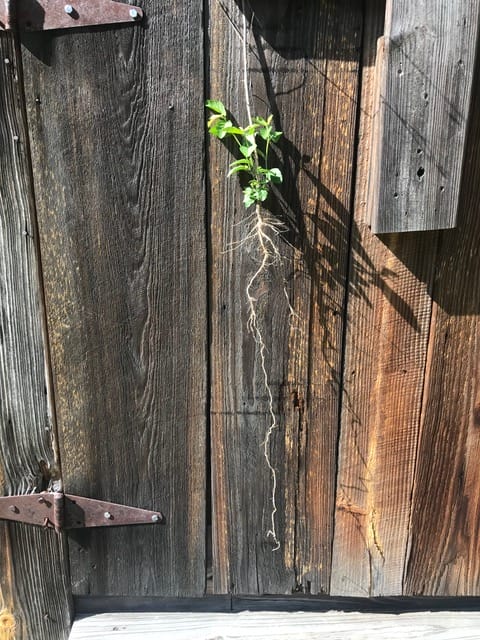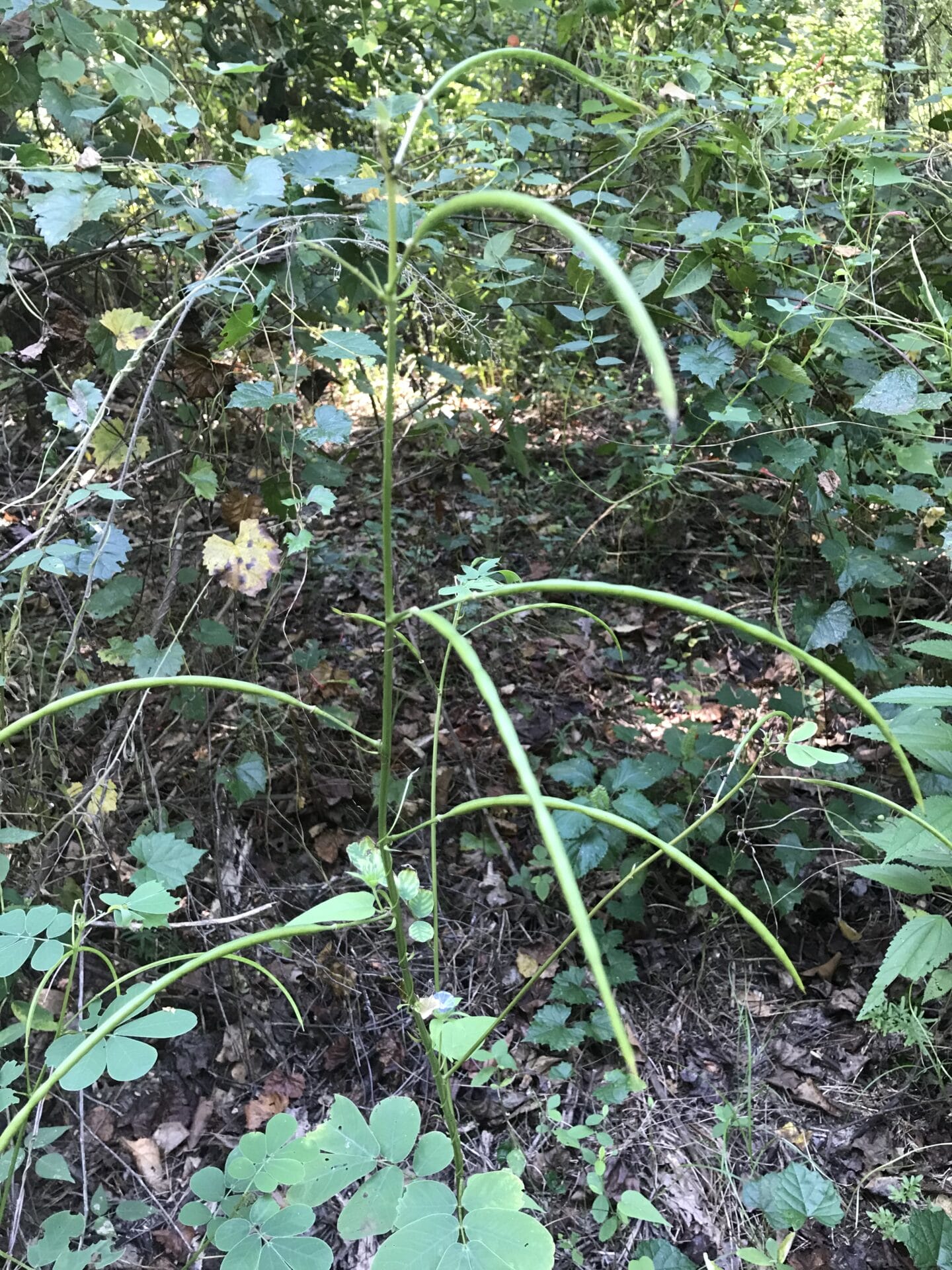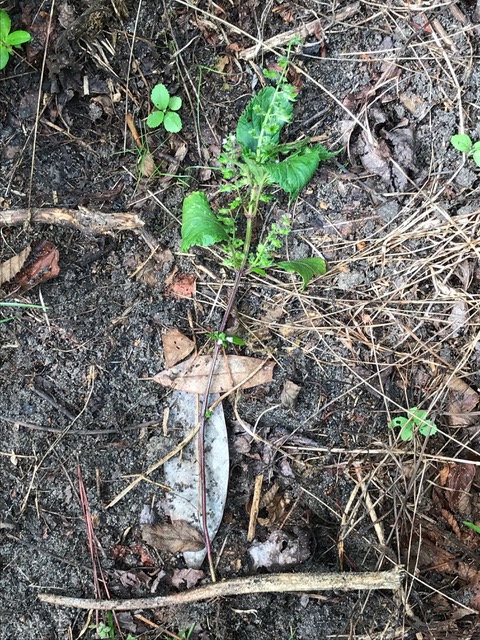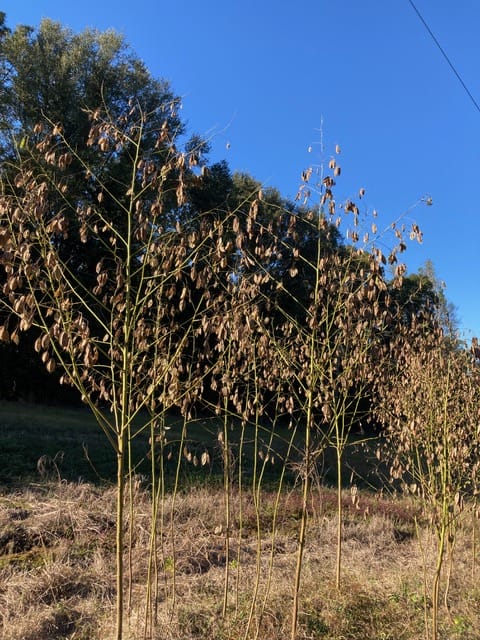Invasive Species Management (Part 2): Mechanical Methods
Heather Brasell
In the last issue of NativeScape, I wrote about ways to prevent the introduction of non-native invasive plants to our gardens and the natural communities we care for. However, despite our best efforts, seeds and spores arrive by wind, water, or animals. We need to have a plan for dealing with them when they arrive.
Controlling invasive plants is not a case of one size fits all. The most efficient and effective methods depend on the target species, the habitat, the area requiring treatment, and the level of infestation. The recommended Integrated Pest Management (IPM) incorporates several approaches: mechanical, chemical (herbicide), fire (prescribed burning), cultural, and biological. Each method has advantages and disadvantages. Many of the prevention strategies described in the previous article are cultural. So too are decisions related to timing (season and weather), appropriate seed selection and planting location, and use of irrigation or fertilizer. This article will focus on mechanical methods – hand pulling, beheading (mowing) or cultivating (disking). This is often our primary go-to method.
Pulling plants out of the ground, whether by hand or with a weed wrench, is great – as long as you remove all the mature seeds and enough of the roots that the plant won’t resprout. It is easier to pull plants if the soil is sandy or moist. Hand pulling plants can be very effective if the plants have weak root systems – usually annuals. Annual plants invest in rapid seed production rather than root infrastructure. In contrast, perennial plants develop deep root systems that help them survive adverse conditions. They survive losing their tops from browse, fire, or top-kill from drought. If the plants have corms, tubers, rhizomes, or deep tap roots, mechanically pulling or even digging often leaves part of the root behind to resprout. Some tiny plants may have deep roots and the stems break before the roots can be pulled up (e.g. Sida rhombifolia and Mexican tea).

Deep roots on Sida rhombifolia make it very difficult to handpull.
Pulling plants disturbs the soil, stimulating seed germination. Light disking is often used to stimulate germination of native plants for wildlife habitats. The first plants to germinate are usually pioneer species – annual weeds. Sometimes, however, this is useful; you can use the soil disturbance to get the seeds out of the seed bank in the soil. If you have a species that remains viable in the soil for a long time (such as invasive legumes), it may be more efficient to trigger massive simultaneous germination soon after soil disturbance so you can get rid of it in one blitz, rather than having to handpull scattered germination over many years.
On sloped sites and adjacent to streams and wetlands, roots are important in holding the soil together and reducing erosion. Pulling plants makes these sites more vulnerable to erosion. Methods that remove only the above-ground parts without disturbing the soil are recommended. The dead roots hold the soil together until other non-invasive plants have time to occupy the site.


Flowers on tiny sicklepod (Senna obtussifolia) and beefsteak (Perilla frutescens).
Beheading plants (mowing or removing above-ground parts) can be effective control for some species, particularly annuals. You can use this method to prevent seed production. However, you have to be careful about timing. If you behead plants too early, many species don’t die; they just respond by producing more stems and often more seeds than before. Sometimes, the new sprouts may be very short and you don’t notice them. Even plants that commonly grow to 8’ tall may resprout and produce flowers and viable seeds when they are only a couple of inches tall (e.g., Perilla frutescens and Senna obtusifolia). The best time to behead annual plants is right before the seeds mature, so they don’t have time to recover and produce more seed. This is really effective with Sesbania punicea, which flowers over a fairly short time and has brittle stems that are easy to snap. However, some species continue flowering over a longer time period (e.g. Crotalaria spectabilis) and they may need multiple treatments each year to prevent seed production.

Seed pods on Sesbania herbacea remain on the plant long after maturing.
In practice, mechanical treatments for perennial species are often temporary and hand treatments are always very time consuming. Depending on the abundance and species of invasive plants and on your stamina, a hand puller could probably manage a few acres. In larger areas the invasive plants probably reproduce and spread faster than you can get rid of them. You are often losing the race if you rely solely on mechanical control.
